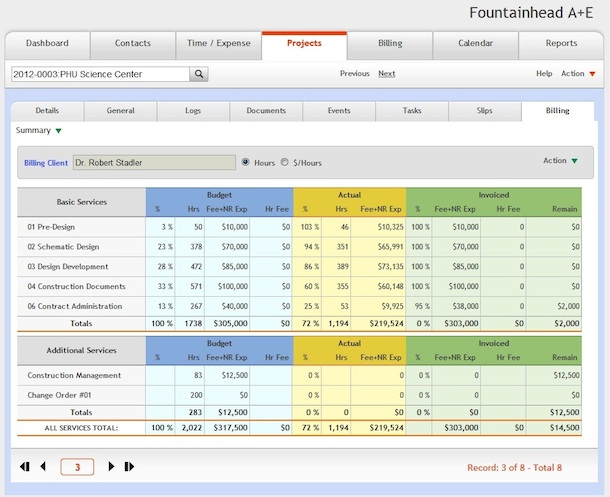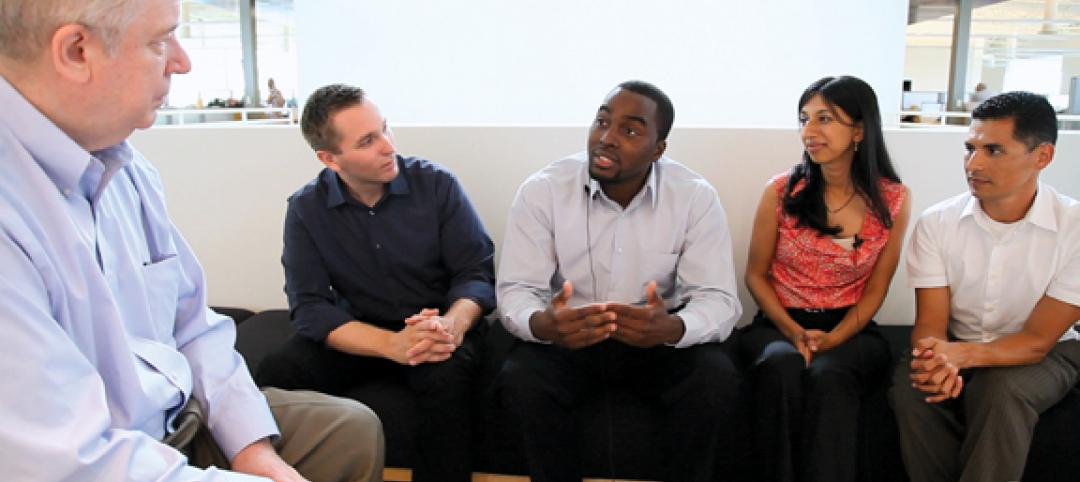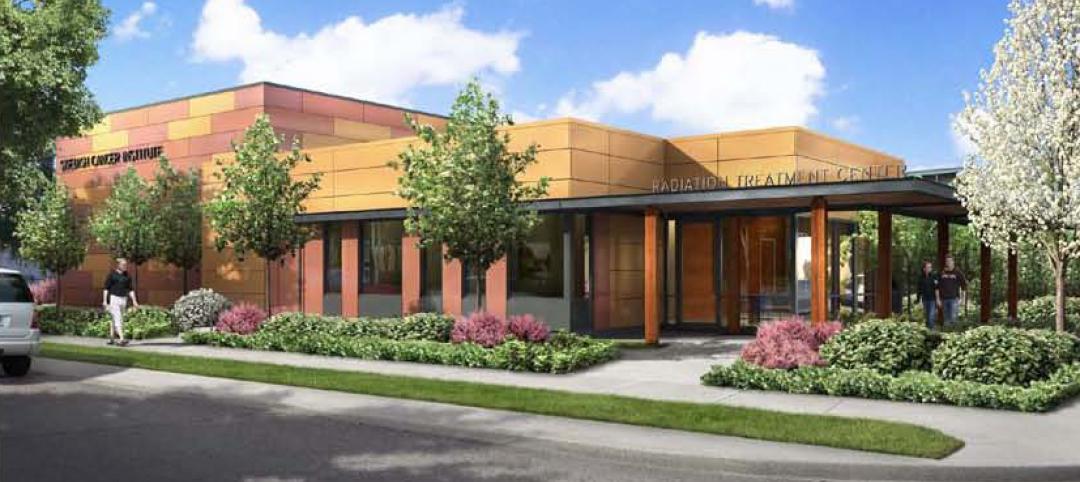They started with just 2 employees and a big dream—to be a premier high-end, multidisciplinary firm, able to provide clients with a full range of services. They wanted to meet and exceed the most discerning clients’ expectations and have Vertical Arts’ vision stamped on every aspect of production.
Since Vertical Arts opened its doors in ’05, they’ve been using ArchiOffice to handle billing and project management. They had fluctuations like everyone else during the roughest years of the recession, yet they’ve more than quadrupled their staff and have plans to expand even more in the coming years.
Their revenue has gone up 300-350% in eight years’ time. Their accountant has even started recommending ArchiOffice to neighboring firms.
They’re able to offer a full service architectural experience—coordinating surveyors, helping clients orchestrate moves or get home inspections done, and allowing consultant billing to come through them.
How Do They Do It?
They Invoice in Half a Day or So
Using ArchiOffice means they can get billing done for all their complex projects in half a day to a day. So all employees’ hours are always billable, and Parker, the company’s only administrative employee can tackle billing efficiently, getting on to his other responsibilities. “If we didn’t have ArchiOffice, we’d have to hire at least one more person, part or full time,” he admits. Instead, they can take on more jobs and projects because their staff isn’t tied up doing administrative work.
They Organize Projects Ridiculously Well
Parker explains: “We have one specific project that we’ve chosen to divide into with 9 sub-projects, so that we can individually track time and expense per sub-project. And ArchiOffice keeps that whole world organized for us. ArchiOffice allows us to manage more jobs and projects with still just one support staff member.”

Since Vertical Arts opened its doors, the firm has been using ArchiOffice to handle billing and project management. The firm can get billing done for their projects in less than a day.
Their Client Relationships are Rock Solid
“It streamlines our process and gives us access to tons of information and reports quickly so we don’t spend much time answering questions for clients—we just generate it and send it right back. I know our clients trust our billing and our process. It’s really strengthened our client relationships.”
They Became an Incredibly Impressive Firm
“Overall ArchiOffice is just a great billing and project management software—to be able to go to one place and see all your time, all your budgets, all your invoices and transactions, it just streamlines the administrative side significantly,” explains Parker.
Now, Vertical Arts doesn’t have to settle for taking on uninspiring projects. They do most of their work with a number of individual clients. They’ve achieved their dream of being a multidisciplinary high-end firm—they have an interior designer on staff, a landscape architect, as well as a full architectural team, so they’re able to provide the full range of services they know their clients deserve.
Learn more about ArchiOffice Software here.
Check out Vertical Arts Architecture here.
Related Stories
| Oct 4, 2012
HMC Architects in service to the community
HMC employees give back to their communities through toy drives and fundraising efforts like CANstruction, which benefits local food banks.
| Oct 4, 2012
Career development, workplace environment programs key to retention at HMC Architects
Architecture firm take a multifaceted approach to professional development.
| Oct 4, 2012
Foundation tightens HMC Architects bond with local communities
Founded in 2009 with an initial endowment of $1.9 million, HMC’s nonprofit Designing Futures Foundation (DFF) has donated about $230,000 in its three years of existence, including $105,000 in scholarships to California students. The grants help promising high schoolers with an interest in architecture, design, engineering, education, or healthcare pay for expenses like test preparation services, computers, and college entrance exam fees and tuition. The scholarships can be extended for up to five years of college.
| Oct 4, 2012
Gilbane publishes Fall 2012 construction industry economic report
Report outlines fluctuation in construction spending; predicts continued movement toward recovery.
| Oct 3, 2012
Fifth public comment period now open for update to USGBC's LEED Green Building Program
LEED v4 drafts and the public comment tool are now available on the newly re-launched, re-envisioned USGBC.org website.
| Oct 2, 2012
Mirvish and Gehry unveil conceptual design to transform Toronto’s entertainment district
Reimagining of King Street Entertainment District supports Toronto’s cultural corridor.
| Oct 2, 2012
Dow Business Services Center building named 2012 “America’s Best Buildings of the Year” winner
Building constructed with air sealing and insulation products from Dow Building Solutions.
| Oct 2, 2012
Bernards working on project at L.A. White Memorial Medical Center
The new facility is a $15-million, 41,000-sf concrete structure which includes three stories of medical office space atop a three-level parking garage.
| Oct 1, 2012
Tyco completes separation process, now largest pure-play fire protection and security business
Tyco Integrated Security focused on delivering security solutions to commercial businesses.
| Sep 28, 2012
Seattle is home to first LEED-certified modular radiation center
By using modular construction and strategic site design, RAD Medical Systems built the first radiation center to receive LEED certification.

















